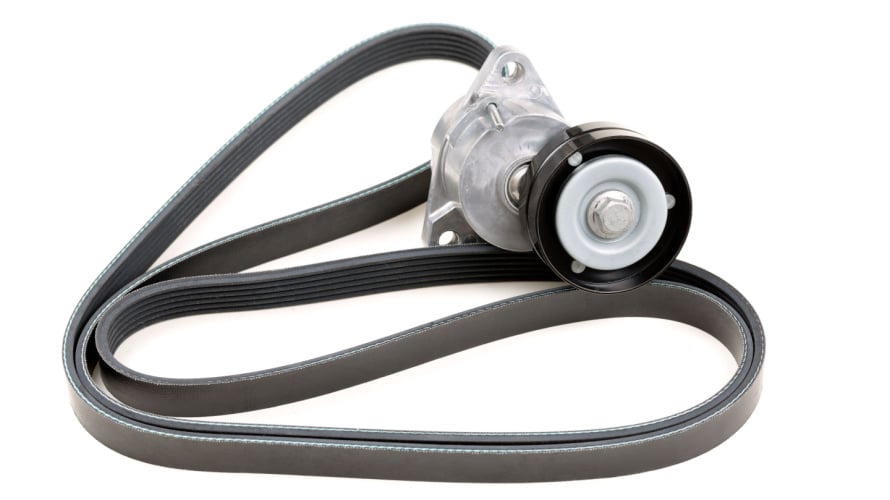Serpentine Belt Replacement: What You Need to Know to Keep Your Vehicle Running Smoothly
March 13, 2024
Uncategorized

Keeping your vehicle in top condition requires attention to various components, including the serpentine belt. This essential part is crucial in operating your vehicle’s engine and auxiliary systems. At TIRECRAFT, we know the importance of serpentine belt maintenance and replacement to ensure your vehicle runs smoothly and reliably.
Understanding the Serpentine Belt
The serpentine belt, also known as a drive belt, is a single, continuous belt that snakes its way through various engine parts. It connects the crankshaft to components such as the alternator, power steering pump, air conditioning compressor, and water pump. As the engine runs, the serpentine belt transfers power from the crankshaft to these engine parts. Allowing these specific engine parts to operate efficiently.
Signs it is Time for Serpentine Belt Replacement
Like any other component, the serpentine belt undergoes wear and tear over time. Here are some signs that may indicate it is time for a replacement:
- Squealing Noise: A high-pitched squealing noise coming from the engine area may indicate a worn or slipping serpentine belt. This noise typically occurs during engine start-up or acceleration.
- Visible Wear: A visual inspection of the serpentine belt may reveal signs of wear, such as cracks, fraying, or glazing. These indicate that the belt has deteriorated and needs replacement.
- Accessory Malfunctions: If engine parts driven by the serpentine belt, like the alternator, power steering pump, or air conditioning compressor, begin to have issues, it could indicate that the belt is failing.
- Engine Overheating: A failing serpentine belt can affect the operation of the water pump, leading to engine overheating. If your vehicle’s temperature gauge shows higher-than-normal readings, it may be time to check the serpentine belt.
Impact of Worn or Damaged Serpentine Belt
A worn or damaged serpentine belt can greatly affect your vehicle’s performance and safety.
- Loss of Power: If the serpentine belt fails, engine parts such as the alternator and power steering pump will cease functioning. This can result in losing electrical power and steering assistance, making it difficult to control the vehicle.
- Engine Damage: The serpentine belt also drives the water pump, which circulates coolant through the engine to prevent overheating. A broken belt can lead to engine overheating and potential damage to internal components.
- Accessory Failure: A failing serpentine belt can cause engine parts like the alternator and air conditioning compressor to malfunction or fail completely. This can result in a loss of electrical power, diminished cooling capacity, and reduced comfort while driving.
Serpentine Belt Replacement Process
When replacing a serpentine belt, it is essential to follow proper installation procedures to ensure optimal engine performance and longevity. Here is an overview of the replacement process:
- Visual Inspection: Begin by visually inspecting the serpentine belt for signs of wear, damage, or misalignment. If you detect any issues, proceed with replacement.
- Belt Tensioner: Locate the belt tensioner pulley and use a wrench or specialized tool to release tension on the belt. This allows you to remove the old belt easily.
- Remove the Old Belt: Carefully slide the old serpentine belt off the pulleys, taking note of its routing path for installation of the new belt.
- Install the New Belt: Begin by routing the new serpentine belt according to the manufacturer’s specifications, ensuring it sits properly on each pulley.
- Check Tension: Use a belt tension gauge or follow manufacturer guidelines to adjust the tensioner pulley to ensure proper belt tension.
- Final Inspection: Once the new belt is installed and tensioned correctly, perform a final visual inspection to verify proper alignment and seating on all pulleys.
Following these steps and using high-quality replacement belts ensures your vehicle’s serpentine belt operates smoothly and reliably.
The serpentine belt is crucial in operating your vehicle’s engine and auxiliary systems. Regular inspection and timely replacement are essential to prevent unexpected failures and maintain optimal performance and safety.
At TIRECRAFT, we provide professional serpentine belt replacement services. This service will keep your vehicle running smoothly and reliably on the road. Contact us today to schedule an inspection and ensure the health of your vehicle’s serpentine belt.
Back


